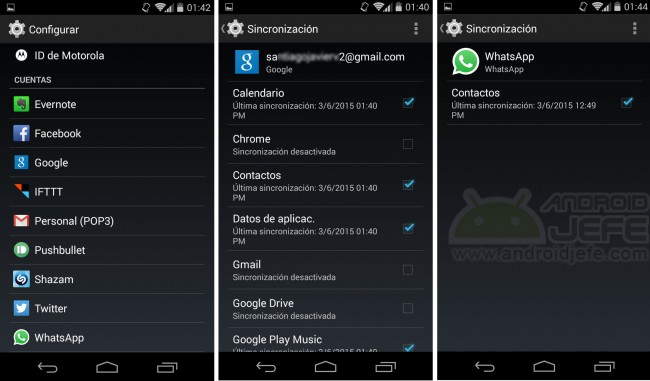Synchronization or “Sync” is a process that equals or matches the information in multiple places. For example, the contacts or files in your Google account and on your Android device. Or Evernote notes on your PC and cell phone.
Thanks to the synchronization, the new emails are also downloaded from the server to the cell phone so that you are notified about them. Or the contacts you add to WhatsApp in WhatsApp Web are updated.
How to disable sync on Android
Synchronization is an automatic process that runs permanently in the background. Turning it off is usually inconvenient, although doing so could slightly reduce battery consumption and can help save mobile data.

To disable syncing on Android simply use the shortcut in the quick settings. This will disable syncing in all apps that do this process.


Check or uncheck the app box to enable or disable synchronization (Configure> Accounts).
If you just want to disable syncing for a particular app, go to Settings> Accounts. Some applications also have their own sync “toggle” in their settings. Another way to get the same result is to block the internet from the application.


Synchronization activated on Twitter.
In case you don’t find it convenient to turn sync off, some apps like Evernote offer the option to set a longer sync interval, which can also help reduce battery and data usage.
conclusion
SINC or synchronization is an important process on your Android device to be notified of new emails or reflect changes in apps that you also use on other devices. Although disabling it might slightly reduce battery consumption or data usage, if this doesn’t bother you too much it wouldn’t be worth disabling.